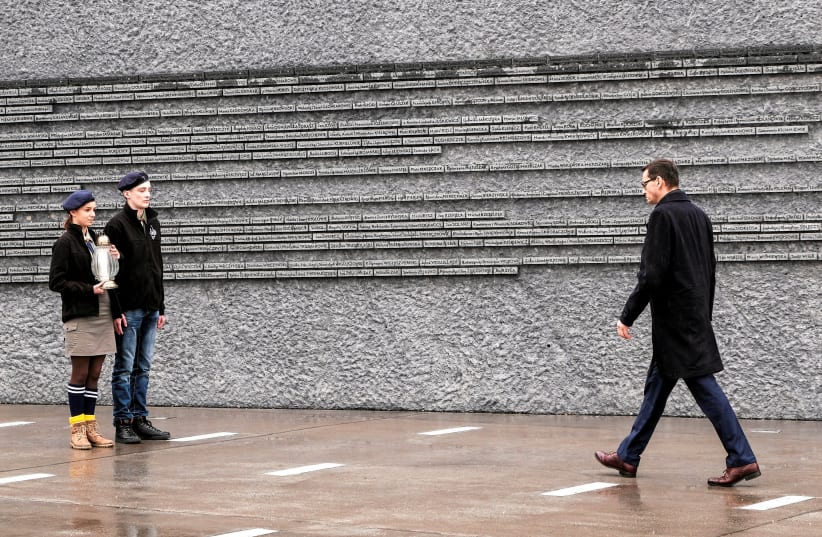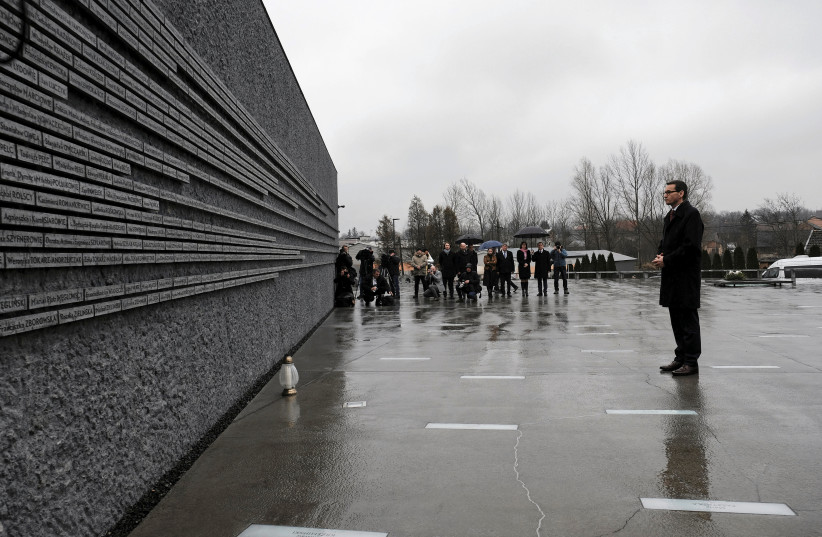Markowa is a small Polish town located in the Lancut southeastern region of the country. In the 1920 government census, there were only two Jewish families consisting of 13 people who lived in Markowa at that time. The town’s claim to fame, from a Jewish standpoint, rests upon the 1944 story of the local Ulma family who hid and protected eight Jews in their attic in a daring and certainly life-threatening attempt to save lives from guaranteed murder by the Nazis.
Unfortunately for all, the entire Ulma family – father, nine–month–pregnant mother and six children – along with the eight Jews in hiding were murdered by the Nazis after being exposed and reported by the Polish Blue Police.
Honoring the Ulma family
In 1995, the Ulma family was designated by Yad Vashem as Righteous Gentiles. In their honor and memory, a 2016 decision was adopted by the township to open the Markowa Ulma-Family Museum of Poles Who Saved Jews in World War II. Today, the Markowa Museum reports that 80,000 people visit this moving place annually.
In a May 8, 2018, article by Judy Maltz in Haaretz titled “Why People Are Boycotting a Museum Dedicated to Poles Who Saved Jews,” the writer highlights the fact that “Critics charge that the Ulma Family Museum in Markowa is part of a government campaign to whitewash Polish history during World War II”. Today, just five years after the Haaretz article, the Markowa Museum has resurfaced in the news as one of the numerous recommended sites by the Polish government for Israeli student groups to visit while touring Poland.
Whitewashing Polish history during WWII?
Israeli media reporting on the list of these recommended sites – singling out the Markowa Museum – have, once again, opened the conversation regarding the Polish government’s campaign to whitewash its own history during World War II.
As one who has led over 30 high school, collegiate and adult Jewish heritage tours to Poland, I feel confident in expressing a reasonable opinion regarding the value of the Markowa Museum visit.
AS WITH all tour guides to Poland equipped with a particular agenda and approach, I, too, do things my way, as a rabbi and educator, to make the week-long journey as experiential as possible. The trip is a saga of rich Jewish life – religious, cultural and historic – tarnished with suffering, pain and horrific death. For example, the day-long visit to Lublin couples the inspirations of the 16th-century Torah luminaries and the 20th-century Hachmei Lublin Yeshiva with the struggles of the Lublin Ghetto occupants and the hell of Maydanek.
My agenda does not fail to draw attention to the Righteous Gentiles as a beacon of light in an ocean of darkness. Indeed, the Polish people suffered during the war and do regard themselves as victims in a conquered country. It is also well known and documented that no small number of Poles were guilty of murdering many Jews, along with their complicity and cooperation with the Nazi authorities.
At Markowa, it was the Poles who betrayed the Ulma family to the Nazi authorities. However, the mere fact that a minuscule number of Poles (6,700, according to Yad Vashem records) were prepared to sacrifice everything, including their lives, to save Jewish lives must be regarded as an act of heroism of the greatest order. They deserve our acknowledgment, admiration, honor and respect. This is the impression one walks away with from a visit to the Markowa Museum.
No attempt is made to hide the fact that the Righteous Gentiles represent a distinct minority of the Polish population during the war. But, there were those in Markowa – not only the Ulma family – who were very different and didn’t follow the ordinary Polish path. As a matter of fact, after the murder of the Ulma family, another 17 Jews were still being protected by local Markowa residents and survived the war.
In my humble opinion, it is far less important to ponder the Polish government narrative surrounding the Markowa Museum and what is much more significant is the Jewish reaction to the phenomenon of Righteous Gentiles.
Experience demonstrates that members of my groups leave the museum with a sense of hakarat ha’tov – showing genuine appreciation and awe to all who carry the honorable title of Righteous Gentile. The one-hour visit to the museum is a worthwhile, valuable and quite noble experience.
The writer is a noted rabbi and educator who has led several dozen student trips to Poland.

